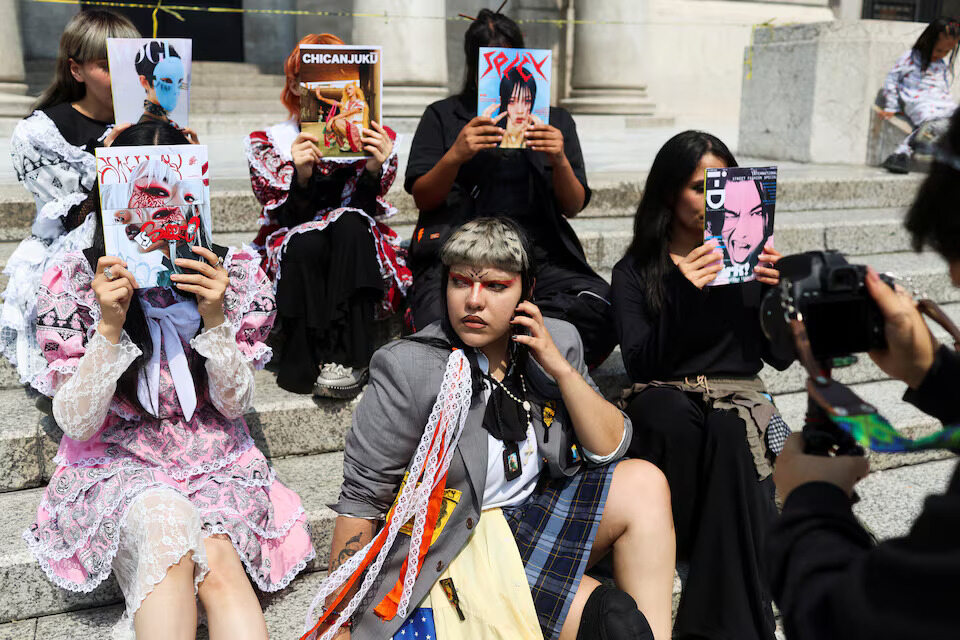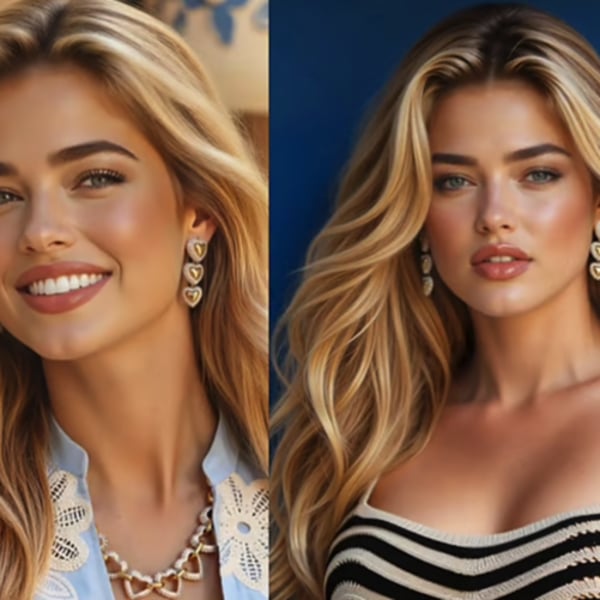By
Reuters
Published
June 19, 2025
In a leafy park in Mexico City, beside colonial-era fountains and food stands, Italia Segovia’s designs are turning heads, as usual.

She wore a pink ruffled dress with white lace and a big bow and a high-school-vibe tartan dress tied with a pale yellow shawl featuring Mexico’s patron saint, the Virgin of Guadalupe — all accentuated by loud, heavy makeup.
Segovia, known to her friends as Kumiko, calls her work Chicanjuku, a fusion of Mexican-American Chicano culture and Japanese Harajuku style. It is named after the Tokyo district renowned for its bright-colored accessories, outlandish makeup, and elaborate hairstyles.
“It’s like a food blender of styles,” Segovia said of her designs, which have also become a core part of her identity.
Mexican-Americans popularized Chicano style in the U.S. who felt out of place in both countries because of their mixed backgrounds, said Segovia. Though she is not Mexican-American, she has several relatives in the U.S. who inspired her deep love for the style she now draws from.

Segovia, who has almost 30,000 followers on Instagram, blends the oversized shirts, khakis, and flat-brim caps of Chicano culture with Harajuku’s whimsical, fairy-tale aesthetic. The makeup might feature dark lip lining and eyeliner inspired by traditional Geisha makeup.
“You can always experiment with fashion and art as long as it’s from a place of knowledge and respect,” Segovia said.
Segovia’s distinctive aesthetic has even caught the eye of admirers in Japan. In June, she created special outfits for three Japanese E-Queens—a subculture of electronic music dancers—whom she had connected with online several months earlier.
The group met up in Mexico City for a photo shoot and street dance, dressed in Segovia’s outfits.
“I love how she uses texture,” said Shirendev Oyun-Erdenen, a Japanese E-Queen who dances under the name Maaya the Bee.
“Helping people feel free to experiment and not be afraid. That’s what it’s all about,” Segovia said.
© Thomson Reuters 2025 All rights reserved.




